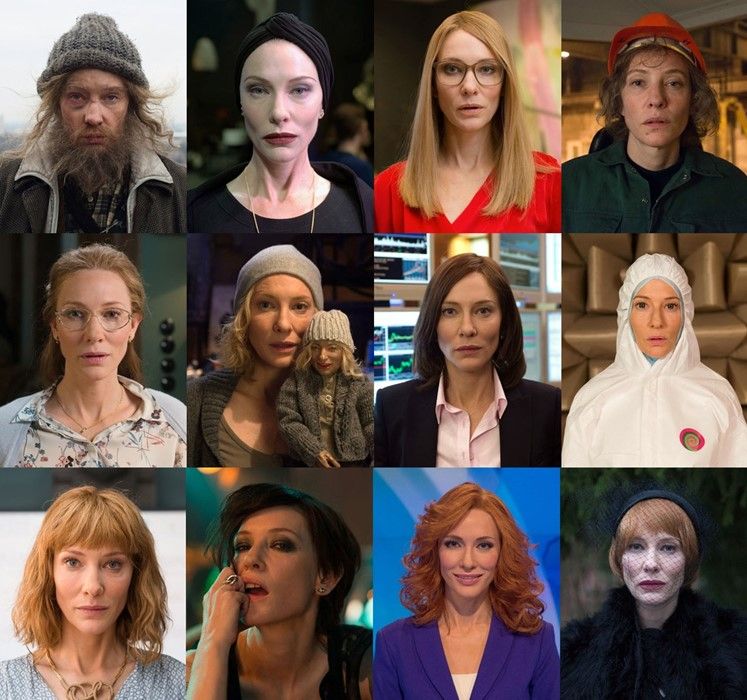Visiting Budapest, whose iconic castle is haunted by 20th century manifestoes
The German artist Julian Rosefeldt’s exhibition, Manifesto, which was a huge success in Berlin in 2015, came to Budapest this summer. The 130-minute long film installation presents monologues from 20th century art manifestoes through 12 life stories. The 12 characters – 11 female and one male – are all played by the gorgeous Cate Blanchett. The physical transformation of the Australian actress in each of her roles is already a good reason to check out the exhibition, or to take a look at the short films on Julien Rosefeldt’s website. However the most compelling aspect of this exhibition was the way Rosefeldt made these outdated manifestoes relevant again.
It was a lazy Saturday afternoon when I decided that the two art coupons on our fridge should finally be used. Only a few minutes later, my mother and I were driving to the Hungarian National Gallery, in Buda Castle. Whoever has seen Buda Castle knows that on a beautiful day it is the most wonderful place to walk around and have a view of the city. One does not wish to sit in a dark room for more than two hours on such a lovely day. But being determined to see the exhibition we disappeared into the dungeon of the National Gallery. (I am glad to say that the sun was still out after our artistic adventure and we could have a delicious cake on the terrace of a pretty little coffee shop, talking about what we had just seen.)
No surprise that all of the manifestoes are desperate calls against the past
The 20th century’s political and artistic movements’ main points and goals were often summarized in manifestoes. The most famous manifesto in the world is probably The Communist Manifesto, by Karl Marx and Friedrich Engels. This is what Rosefeldt starts with, followed by extracts about all the important artistic movements, like futurism, dadaism, and surrealism.
The manifestoes often contain outrageous ideas and caused scandal at the time of their publication. This was simply due to the philosophy of the previous century. The nineteen-hundreds were all about change, the break with traditions and the celebration of modernity. Artists usually considered themselves the pioneers of modernity. “In this period of change the role of the artist can only be that of the revolutionary,” says the homeless man in the second video, presenting the ideas of situationism. No surprise that all of the manifestoes are desperate calls against the past, against traditions, against memories and heroes. 20th century artists were for constant change and development, no past, no future, no present even. Julian Rosefeldt purposely chooses extracts which emphasize this. The epilogue, which I think reflects his own views and beliefs the most, starts with Lebbeus Woods’s words: “I am at war with my time, with history, with all authorities that reside in fixed and frightened forms. (…) I know only moments and lifetimes that are as moments and forms that appear with infinite strength then melt into air”.
It seems ironic to place this exhibition in the gallery of Buda Castle, which is probably the most iconic historical building in Hungary and commemorates the stormy past
It seems ironic to place this exhibition in the gallery of Buda Castle, which is probably the most iconic historical building in Hungary and commemorates the stormy past, the traditions and heroes of Hungary. Hearing the futurists’ words from Blanchett’s broker – “Shit to Florence, Montmartre and Munich! Shit to dictionaries, good-tastisms, Orientalism, academicism! Shit to Dante, Shakespeare, Tolstoy, Goethe! Beshitted dilettantisms! Shit to Montaigne, Wagner, Beethoven, Whitman and Baudelaire!” – in one of the historic capitals of culture, literature and art seems scandalous, just as it was scandalous for the first time in Milan, Bologna and Paris. Walking around the castle, the Fishers Bastion, and Mathias’s Church with the voice of Blanchett’s factory worker in your ears repeating constantly, “Let us overturn monuments, pavements, flights of steps, let us sink the streets and squares, let us raise the level of the city,” makes you think about the role of architecture in past, present and future Hungary. The contradiction of the location and content of the exhibition is why it is thought-provoking, confusing, and genius. You walk up to the gallery surrounded by monuments and statues which each have their own story and mythology; then you go into this exhibition and a sophisticated lady tells you in the name of vorticism that, “We do not need the obsolete props of an outmoded and antiquated legend,” while a strident, creationist punk shouts into your face that we should not “reincorporate old values, but create a new. The past we are leaving behind us is carrying. The future we leave to the fortune tellers. We take the present day”.
I find it so hard nowadays to find a piece of art work that is fantastic both visually and in its meaning, but I am happy to say that Julian Rosefeldt’s Manifesto has it all. Each and every one of the 13 short films were breath-taking visually, and thanks to the brilliant acting of Blanchett you do not even need to understand the often difficult monologues to perceive the overall message of the manifestoes and artistic movements.

Comments